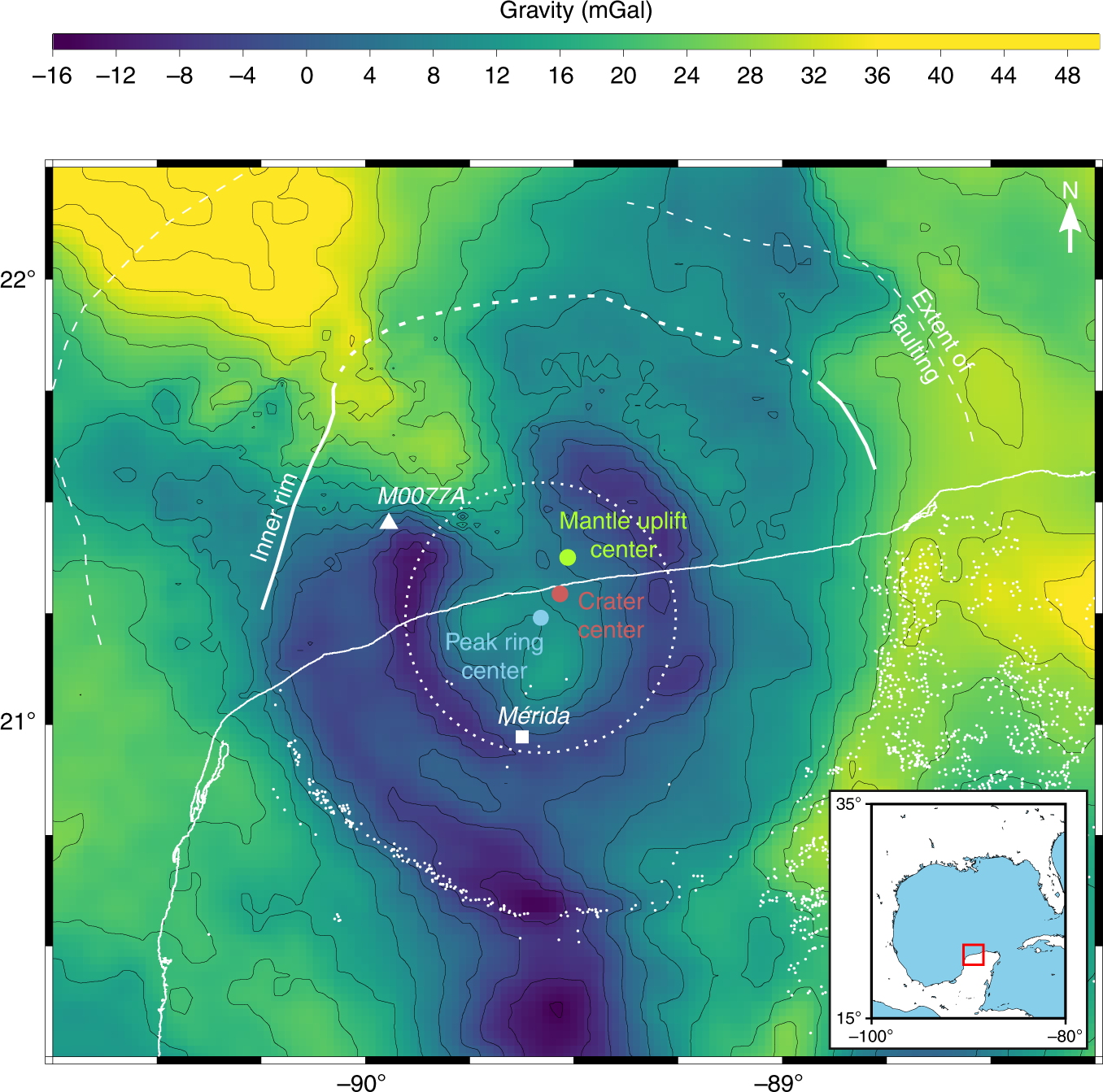
© Gareth Collins/Imperial College LondonAsymmetries of the Chicxulub crater.
The asteroid that
most believe wiped out the dinosaurs struck at the deadliest possible angle, according to new analysis combining 3D numerical impact simulations and geophysical data from the site.
The 66-million-year-old Chicxulub crater in Mexico was formed by a steeply inclined impact of between 45 and 60 degrees to the horizontal, the researchers suggest, which maximised the amount of climate-changing gases thrust into the upper atmosphere.Such a strike likely unleashed billions of tonnes of sulphur, blocking the Sun and triggering the nuclear winter that killed 75% of life on Earth.
The researchers - from Imperial College London (ICL), the University of Freiburg, Germany, and the University of Texas, US - say their models are the first fully 3D simulations to reproduce the whole dramatic event, from the initial impact to the crater formation.
Reproducing the final stage, in which the transient crater collapsed to form the final structure, allowed them to make the first comparison between 3D simulations and the present-day structure of the crater.
"Our simulations provide compelling evidence that the asteroid struck at a steep angle, perhaps 60 degrees above the horizon, and approached its target from the northeast," says ICL's Gareth Collins, lead author of a
paper in the journal
Nature Communications.
"We know that this was among the worst-case scenarios for the lethality on impact, because it put more hazardous debris into the upper atmosphere and scattered it everywhere..."
As well as lots of water, the upper layers of earth around Chicxulub contained porous carbonate and evaporite rocks which, when heated and disturbed by the impact, would have decomposed, flinging vast amounts of carbon dioxide, sulphur and water vapour into the atmosphere.
Sulphur would have been particularly hazardous as it rapidly forms aerosols - tiny particles that would have blocked the Sun's rays, halting photosynthesis in plants and rapidly cooling the climate.
The researchers examined the shape and subsurface structure of the 200-kilometre-wide crater and also factored in
recent results from drilling, which brought up rocks containing evidence of the extreme forces generated by the impact.
Pivotal to diagnosing the angle and direction of that impact, they say, was the relationship between the centre of the crater, the centre of the peak ring - a ring of mountains made of heavily fractured rock inside the crater rim - and the centre of dense uplifted mantle rocks 30 kilometres below the crater.
At Chicxulub, these centres are aligned in a southwest-northeast direction, with the crater centre in between the peak-ring and mantle-uplift centres. The team's 3D Chicxulub crater simulations at an angle of 60 degrees reproduced these observations almost exactly.
"Impacts that occur at a steep angle of incidence are more efficient at excavating material and driving open a large cavity in the crust than shallow incidence impacts," they write in their paper.
"Our preferred impact angle of ca. 60° is close to the most efficient, vertical scenario, which suggests that previous estimates of impactor kinetic energy based on high-resolution 2D vertical impact simulations do not need to be revised dramatically based on impact angle."
While the study looked specifically at Chicxulub, the researchers say it also helps understand how large craters form on other planets.
"Large craters like Chicxulub are formed in a matter of minutes and involve a spectacular rebound of rock beneath the crater," says ICL's Thomas Davison.
"Our findings could help advance our understanding of how this rebound can be used to diagnose details of the impacting asteroid."
Reader Comments
The overview re new site:[Link]